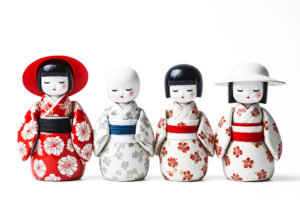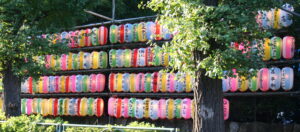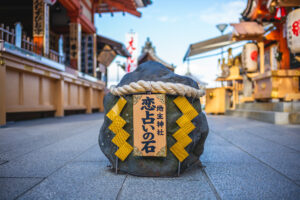In the pantheon of traditional Japanese attire, the humble wooden sandal, or "geta," holds a unique place. These sandals, crafted from wood and bound to the foot with cloth thongs, have traversed centuries, evolving from mere footwear to a symbol of Japanese culture and aesthetic. This exploration delves into the rich tapestry of history, craftsmanship, and present-day significance surrounding the geta. From the echoes of ancient footsteps to the vibrant streets of modern Tokyo, the journey of these wooden sandals encapsulates the enduring spirit of Japan.
Exploring the Origins of Japanese Wooden Sandals
The genesis of Japanese wooden sandals stretches back to the Nara period (710–794 CE), anchoring them firmly in Japan’s cultural and historical tapestry. Initially, these sandals served as practical footwear, designed to elevate the foot above the ground, protecting wearers from mud, rain, and debris. The earliest forms were simplistic, focusing on functionality over form. However, as society evolved, so did the geta, adopting various styles to suit different classes and occupations. These sandals were not just footwear but a reflection of the times, mirroring the social structures and environmental adaptations of ancient Japan.
The Evolution of Geta: From Function to Fashion
Over centuries, the geta underwent a remarkable transformation, moving beyond its utilitarian roots to become a fashion statement. During the Edo period (1603–1868 CE), the geta began to diversify in style, color, and purpose. Artisans experimented with the height, shape, and materials, catering to the tastes and demands of a society increasingly focused on aesthetics. This era also saw the differentiation of geta for special occasions, with ornate designs reserved for festivals and ceremonies. The evolution of geta speaks volumes about the dynamism of Japanese fashion, illustrating a journey from practicality to expression.
Carving Culture: The Craftsmanship Behind Geta
The creation of geta is an art form, requiring skill, patience, and an understanding of the material. Artisans, known as "geta-shi," work with a variety of woods, such as paulownia, cedar, and bamboo, each chosen for its durability, lightness, and aesthetic appeal. The process involves meticulous carving, shaping, and finishing, with attention paid to the balance and comfort of the wearer. This craftsmanship not only ensures the geta’s functionality but also imbues each pair with a soul, a testament to the artisan’s dedication and cultural heritage.
Walking the Walk: The Unique Gait of Sandal Wearers
Wearing geta influences how one walks, creating a distinctive gait known as the "geta-bata" sound, named after the clacking noise the sandals make on hard surfaces. This walking style engages different muscles compared to modern footwear, purportedly improving posture and balance. The rhythm and sound of geta on stone streets have become emblematic of traditional Japanese ambience, evoking imagery of historical scenes and serene temple grounds. Thus, the act of walking in geta transcends mere locomotion, embodying a connection to history and nature.
From Samurai to Streets: The Historical Journey
The journey of geta from the feet of samurai to the fashion-forward youth of Tokyo illustrates a fascinating cultural shift. Historically, different classes, including samurai, adopted specific styles of geta for various purposes, from the practical to the ceremonial. As Japan opened to the West, the geta faced competition from Western footwear but never vanished. Instead, it found new life in the streets, embraced by generations seeking to reconnect with their heritage or make a fashion statement. Today, geta are worn by a broad spectrum of society, symbolizing a blend of tradition and modernity.
The Artistic Touch: Patterns and Motifs in Geta Design
The aesthetic appeal of geta lies not only in its form but also in the intricate patterns and motifs adorning them. Traditional designs often draw from nature, with flowers, birds, and seasonal elements featuring prominently. These motifs carry symbolic meanings, conveying wishes for happiness, prosperity, or good health. Contemporary designs have expanded the repertoire, incorporating modern aesthetics and personalization. This blend of tradition and innovation ensures that each pair of geta is more than just footwear; it’s a wearable piece of art.
Modern Twists on Traditional Wooden Sandals
In recent years, the geta has seen a resurgence, with designers offering modern interpretations of the traditional sandal. These contemporary versions experiment with colors, materials, and designs, merging tradition with modern fashion sensibilities. Some incorporate rubber soles for comfort, while others feature pop culture motifs, appealing to a younger demographic. This reinvention of the geta demonstrates its versatility and enduring relevance in a rapidly changing world.
The Global Footprint of Japanese Wooden Sandals
Japanese wooden sandals have stepped beyond their native shores, gaining popularity worldwide as a symbol of Japanese culture and craftsmanship. From fashion runways in Paris to streetwear in New York, the geta has made its mark, appreciated for its unique aesthetic and historical significance. This global fascination has spurred collaborations between Japanese artisans and international designers, bridging cultures and introducing the geta to new audiences.
Preserving Tradition: Artisans Keeping the Craft Alive
Despite the challenges of modernization, a dedicated community of artisans continues to preserve the tradition of geta-making. These craftsmen and women are custodians of centuries-old techniques, ensuring the knowledge and skills are passed down through generations. By maintaining the integrity of traditional methods while adapting to contemporary tastes, these artisans play a crucial role in keeping the cultural heritage of geta alive.
Geta in Pop Culture: From Anime to High Fashion
The geta has made notable appearances in popular culture, from the traditional garb of anime characters to the avant-garde collections of high fashion designers. These instances highlight the geta’s versatility and enduring appeal, showcasing its ability to transcend cultural and stylistic boundaries. As a result, the geta remains relevant, continuing to inspire and captivate imaginations around the globe.
Sustainable Steps: Eco-Friendly Aspects of Geta
In an era increasingly focused on sustainability, the geta stands out for its eco-friendly qualities. Made from natural materials and requiring minimal processing, these sandals represent a sustainable footwear option. Additionally, the durability and timeless design of geta promote a culture of longevity and mindful consumption, contrasting with the disposable nature of fast fashion. Thus, the geta not only carries cultural significance but also embodies principles of environmental stewardship.
Where to Find and How to Wear Traditional Geta Today
For those interested in embracing the traditional geta, numerous options are available, from artisan workshops in Japan to online retailers offering global shipping. When wearing geta, it’s important to choose the right size and style for the occasion, whether for a festival, formal event, or casual wear. Pairing geta with traditional Japanese attire, such as yukata or kimono, creates a harmonious look, while incorporating them into contemporary outfits offers a bold fashion statement. Learning to walk in geta may take some practice, but it’s a rewarding experience that connects the wearer to a rich cultural heritage.
The journey of the Japanese wooden sandal, from the ancient pathways of Japan to the fashion-forward avenues of the world, is a testament to its timeless appeal and cultural significance. As artisans, designers, and wearers continue to innovate and adapt the geta, it remains a vibrant symbol of Japanese tradition, artistry, and sustainable fashion. Stepping into a pair of geta is more than just a fashion choice; it’s an embrace of history, a walk in the footsteps of generations, and a step towards a more sustainable future.








